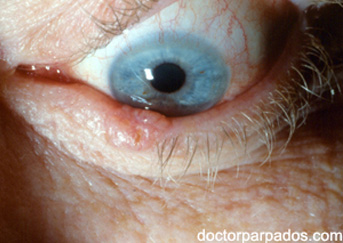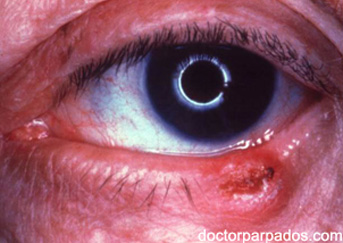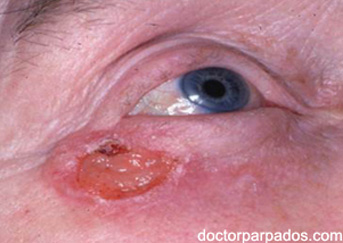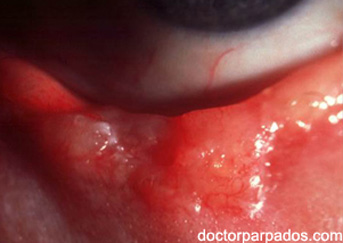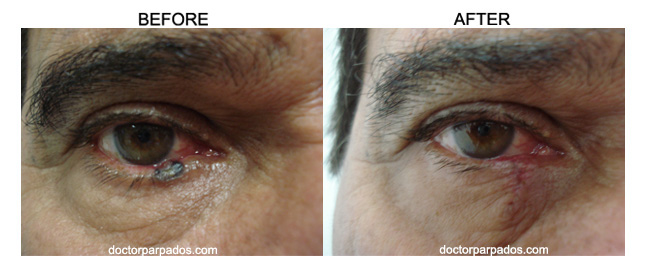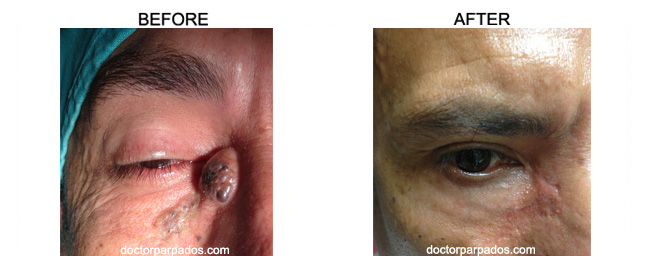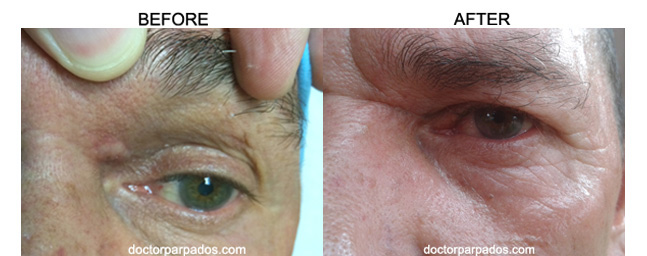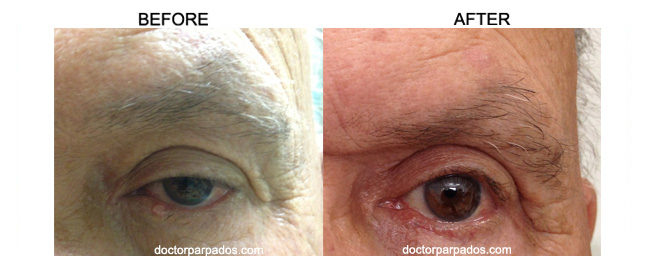Eyelid Cancer
The face and eyelids are very common locations for skin cancer. Many times skin cancers may appear as benign growths. Other times they can develop cancerous characteristics over a relatively short time. Potential warning signs are new growths with elevated, irregular boarders, coloration, indentation, or ulceration, along with bleeding, crusting, and/or distortion of the normal skin structure. If skin cancer forms along the edge of the eyelid it often causes the eyelashes to fall out. Excessive sunlight is the single most important factor associated with skin cancers on the face, though skin cancers may also be hereditary.
There are two very important principles in the treatment of eyelid skin cancers-complete removal and reconstruction. Complete removal of the tumor is critical to minimize the possibility of recurrence. Once the tumor has been completely removed, reconstructive surgery is performed to make a new eyelid or repair the defect. The area of concern is first biopsied to determine if it is in fact a cancer. If the biopsy is not cancerous, no further treatment is required. If the biopsy is cancerous, most cancers are then removed using the MOHS technique because this method has the highest cure rate and preserves the most normal tissue around the eyelids and face.

